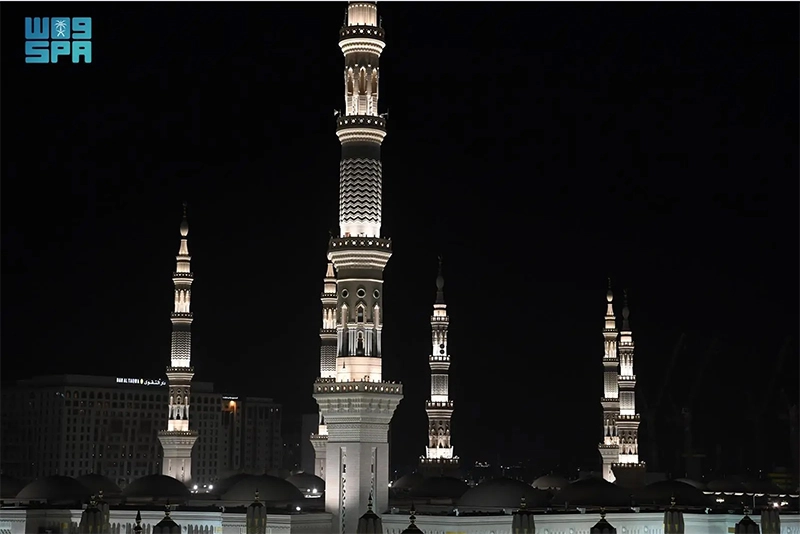
10 Minarets of Masjid Nabawi that resonate with Call to Prayer
The ten minarets of the Prophet's Mosque, Masjid e Nabawi, stand as an iconic Islamic landmark and historical heritage site

Madinah al Munawwarah: The most pleasant sound for every Muslim is Adhan - the Call to Prayer. And, Adhan becomes more resounding if it is called from the Two Holy Mosques.
Muslims around the world tune in to listen to the Adhan called from the Grand Mosque in Makkah and The Prophet's Mosque in Madinah.
There are thousands of Muslims who also imitate the Adhan called from the Two Holy Mosques. Here is a brief history of Adhan during The Prophet’s time and now.
Adhan during the time of The Prophet (PBUH)
The ten minarets of the Prophet's Mosque, Masjid e Nabawi, stand as an iconic Islamic landmark and historical heritage site, impressing visitors and worshippers with their grandeur and Islamic identity.
During the time of Prophet Mohammed (PBUH) and his rightly guided caliphs, the mosque had no minarets. Instead, the call to prayer was made from an elevated place. Bilal ibn Rabah used to call the Fajr (dawn) prayer from the rooftop of a house belonging to a woman from the Banu Najjar tribe.
The need to Call the Adhan from a high place led Muslims to move it from the mosque's ground level to the rooftops of nearby houses, then to the roof of The Prophet’s Mosque with added elevation, and eventually to the construction of minarets at varying heights.
Four Minarets of Masjid Nabawi
As the expansions of the Prophet's Mosque continued, the late King Abdulaziz Al Saud carried out the first improvements between 1370 and 1375 AH.
During this period, he retained the two minarets on the southern side of the mosque and removed the other three, replacing them with two new minarets at the northern corners, each standing 70 meters tall and consisting of four stories.
The first storey is square-shaped, extending above the mosque’s roof and ending with muqarnas supporting a square balcony. The second storey is octagonal, adorned with arches and triangular finishes, topped with muqarnas and a balcony.
The third storey is cylindrical, decorated with colored bands and muqarnas supporting a circular balcony. The fourth level is also cylindrical, featuring columns supporting arches that end in triangular shapes, crowned with muqarnas and a final balcony above.
Six Additional Minarets of The Prophet's Mosque

Between 1406 AH and 1414 AH, six additional minarets were built, each standing 104 meters tall, bringing the total to ten. These minarets were designed to harmonize with those from the first Saudi expansion, with four positioned on the northern side, one at the southeastern corner of the expansion, and another at its southwestern corner.
Each minaret consists of five stories. The first storey is square-shaped. The second storey is octagonal, with a diameter of 5.5 meters, covered in colored artificial stone. Each side features three white marble columns topped with arches that end in triangular shapes, with wooden windows between them. Muqarnas support an octagonal balcony.
The third storey is cylindrical, measuring 5 meters in diameter and 18 meters in height, painted dark gray and adorned with twelve prominent, wavy bands ending in muqarnas that support a circular balcony.
The fourth is also cylindrical, with a diameter of 4.5 meters and a height of 15 meters. It features eight arches resting on white marble columns, topped with muqarnas supporting another circular balcony.
The fifth storey starts as a polygonal cylinder and ends with a serrated crown supporting a conical upper section, followed by an onion-shaped dome carrying a 6.7-meter-high, 4.5-ton bronze crescent, plated with 14-carat gold.
[With inputs from Saudi Press Agency (SPA)]
Follow ummid.com WhatsApp Channel for all the latest updates.
Select Language To Read in Urdu, Hindi, Marathi or Arabic.
